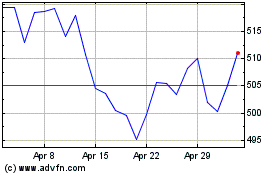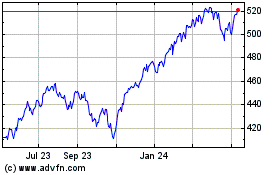Exchange traded funds (ETFs) have come a long way since January
1993--when the first ETF was introduced to the market. The ETF
world has grown exponentially since then and currently there are
more than 1400 U.S. listed products with about $1.3 trillion in
assets under management. And there are more than 900 products
in registration, currently awaiting clearance from the SEC.
With their low-cost, efficiency, flexibility and transparency,
the ETFs have grown in popularity and number and types of products
has surged. ETFs opened doors to investing in the new areas
in the markets (asset class, style, currencies, commodities or
geography) that were earlier inaccessible to regular investors.
(Three Biggest Mistakes of ETF Investing)
ETFs are popular not only with the retail investors but also
with institutional investors like pension funds, foundations and
asset managers. Retail investors love the ETFs because among
others, they also do not impose any minimum investment limits,
unlike some of the index funds. Many investors both individual as
well as institutional use the ETFs for strategic asset allocation,
tactical trading strategies or risk management.
But there are certain ETF products that are pioneer in the
investing world since they changed the way we invest. Thanksgiving
week may be the right time to be thankful for such ETFs.
SPDR S&P 500 (SPY)
It all started with a spider. The ETF that started the
ETF revolution still remains most popular with the investors, with
about $101 billion in AUM. The ETF tracks the S&P 500 index and
is a proxy for the broader U.S. stock market.
For investors who do not believe in or do not want to spend a
lot of time in sector or stock picking and still want to remain
exposed to the U.S. equities, this ETF is a low-cost and convenient
choice. (Three Excellent ETFs with more than 4% Yields)
SPY has exposure to almost all important sectors with
Information Technology, Financials, Healthcare and Consumer
Discretionary being the top four sectors. In terms of
individual holdings, Apple Inc. occupies the top spot, followed by
Exxon Mobil, Microsoft, IBM and General Electric, AT&T.
The fund is well diversified one, with top ten holdings
accounting for just about 20% of the portfolio. The expense
ratio is extremely low at 9 basis points, but this is not the
cheapest large-cap blend ETF choice available to the investors now.
It pays out a dividend yield of 2.09% currently.
SPY has excellent liquidity and trades in high volumes, and thus
it is an ideal choice for large trades but retail investors have
two other slightly cheaper alternatives available in iShares Core
S&P 500 ETF (IVV) and Vanguard S&P 500 ETF (VOO). IVV and
VOO charge seven and five basis points respectively for annual
expenses.
SPDR Gold
Trust (GLD)
Gold has attracted investors’ attention for a very long time,
not only due to its status as store of value and inflation-hedge,
but also due to excellent diversification that it provides to the
portfolio.
Many investors avoided investing in gold earlier just due to
high trading costs and inconvenience associated with buying and
storing the bullion. GLD, launched in 2004 provided an innovative,
cost-efficient and secure way to invest in the metal to such
investors.
Thus it’s no surprise that GLD is the second most popular ETF
with about $75 billion in assets under management. (Shine and
Protect your portfolio with Gold ETFs)
It seeks to replicate the performance of the gold bullion and is
backed by physical holding of gold bullion in London vaults. It
charges 40 basis points for annual expenses.
While GLD is the largest, most liquid and widely traded gold
ETF, iShares Gold Trust (IAU) presents a much cheaper option to GLD
with its expense ratio at 0.25% per year. GLD trades in higher
volumes and has slightly lower bid-ask spreads, compared with IAU,
which may result in some benefit for very large trades. But for
most retail investors, IAU is a more cost-effective option.
PIMCO Total Return ETF
(BOND)
BOND is the ETF version of PIMCO’s flagship blockbuster mutual
fund--the PIMCO Total Return Institutional Fund.
BOND is a very popular product since it provides the opportunity
of getting the portfolio management expertise of Bill Gross, one of
the most respected investment managers in the world. The ETF
has become the second-most-successful exchange-traded-product
launch since GLD’s launch in 2004.
The ETF currently has $3.7 billion in AUM and charges an expense
ratio of 55 basis points per annum. Though the ETF does not
use swaps or other similar derivative instruments which are in the
mutual fund versions of the product (due to SEC rules), it has been
outperforming its mutual fund counterpart since inception in March
this year.
The ETF has returned 10.1% since its inception and it pays out a
decent yield of 2.5%. The portfolio currently holds 873
securities with an effective maturity of 7.6 years and effective
duration of 4.8 years.
According to some industry experts actively managed bond ETFs
are likely to become popular in future and further with time-proven
success of PIMCO Total Return strategy, we expect this ETF to be an
outperformer in the fixed income world.
Want the latest recommendations from Zacks Investment Research?
Today, you can download 7 Best Stocks for the Next 30
Days. Click to get this free report >>
PIMCO-TOT RETRN (BOND): ETF Research Reports
SPDR-GOLD TRUST (GLD): ETF Research Reports
SPDR-SP 500 TR (SPY): ETF Research Reports
To read this article on Zacks.com click here.
Zacks Investment Research
Want the latest recommendations from Zacks Investment Research?
Today, you can download 7 Best Stocks for the Next 30 Days. Click
to get this free report
SPDR S&P 500 (AMEX:SPY)
Historical Stock Chart
From Jun 2024 to Jul 2024

SPDR S&P 500 (AMEX:SPY)
Historical Stock Chart
From Jul 2023 to Jul 2024
